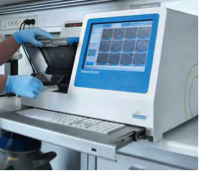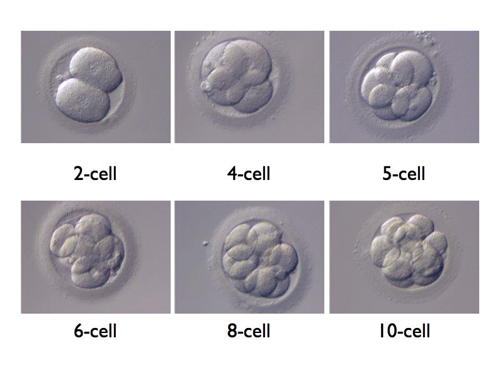Procedures performed in the IVF Laboratory
|

|
As the oocytes are collected, the Embryologist identifies and then places them in the incubator under ideal culture conditions (i.e. temperature, pH, etc.).
The oocytes undergo the final stage of maturation in the incubator.
In the meantime, the semen sample is obtained and processed in the laboratory, so as to collect the most viable sperm.

A few hours after egg collection, the oocytes are fertilized using conventional IVF or ICSI.
The following day, referred to as Day 1, the oocytes are checked for fertilization and those that were fertilized normally are identified.
The chromosomes then combine and cell division follows.
On Day 2, the second stage of cell division occurs and an embryo of 2 cells becomes one with 4 cells.
The embryos are assessed on Days 2 and 3 for transfer up until Days 5 or 6 the latest.
Embryo Assessment

High quality embryos have the following characteristics:
homogenous, light cultured cytoplasm with no granules, smooth membranes, and cells of approximately the same size that touch each other and form a round ball within the zona pellucida.
The zona pellucida should be clear and not too thick.
A common occurrence is fragmentation, which occurs when individual cells break up and disperse within the zona.
The less fragmentation within the embryo, the better.
Before transfer, the Embryologist assesses the embryos' morphology.
The embryos with the best morphology and cell divisions usually have the best chances of implantation and are therefore selected for transfer.
 Nevertheless, assessment is subjective and embryos with poor morphology still have the ability to implant, although it is less likely than those with better characteristics.
Nevertheless, assessment is subjective and embryos with poor morphology still have the ability to implant, although it is less likely than those with better characteristics.The number of embryos to be transferred depends on the quality of the embryos, the woman's age, and the day of transfer.
Other factors to be considered are the couple’s wishes and, of course, the current Law. In Greece, twin pregnancies are more acceptable than is the case in Northern Europe. Hence, the transfer of up to 3 embryos is allowed in women 40 years old or younger, and the transfer of 4 embryos in older women.
Identification and handling of oocytes, sperm and embryos
Every possible effort is made to ensure couples that their oocytes, sperm and embryos are always handled with respect, trust, expertise and care.
Our labeling process and a series of checks before any procedure or technique is performed aims at matching the patient to his/her genetic material (control / identification system of couples’ oocytes, sperm and embryos to eliminate any possibility of error).
This is a constant priority throughout the IVF process.
e-webtools
News
After 16 years of trying to have a baby, our dream became reality!
Irini - Babis
Edessa 25/1/2012






